Philips Evnia 25M2N5200P review: Evnia makes a budget monitor hit
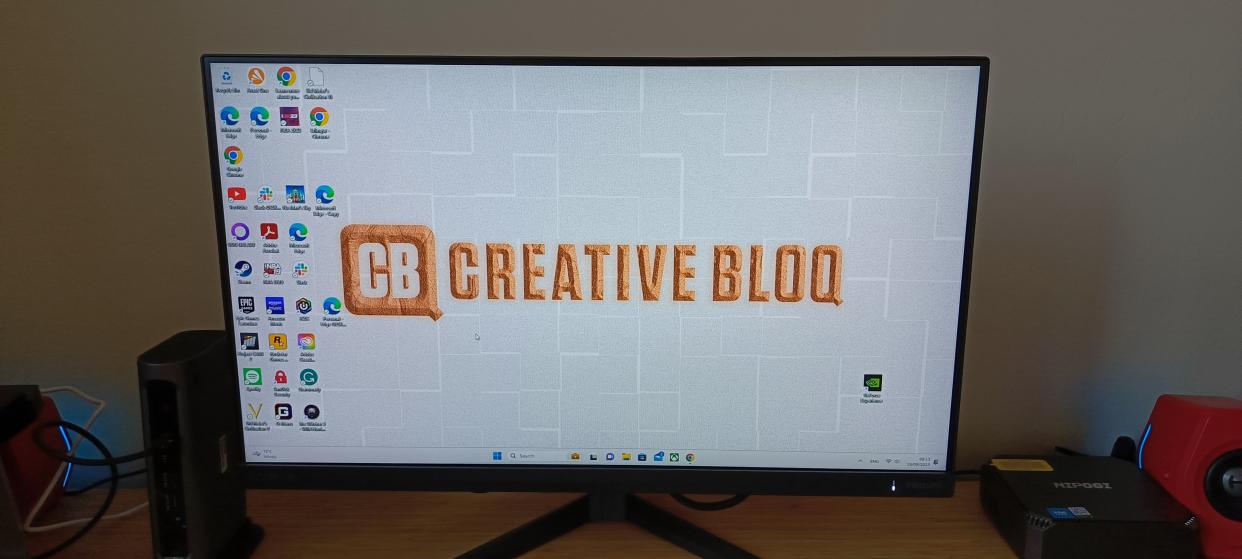
The Philips Evnia 25M2N5200P is one of the latest in a rapidly expanding lineup of the new Evnia gaming brand from monitor maker Philips. While most of Evnia's monitors so far have aimed at the midrange or more expensive monitors, the 25M2N5200P comes in at the budget end. But without sister brand AOC's flashy styling, does the more straight-edge Evnia stand a chance of wooing its prospective users?
I got a review sample in to test for a number of weeks, not just as a gaming monitor, but as a monitor I could also use for work and creative tasks; we are a creative site, after all. So while I'd be keeping an eye on our guide to the best gaming monitors when comparing this monitor against the competition, I'd also be evaluating whether this could be a candidate for our guide to the best monitors for working from home. I used it as my day-to-day work monitor, writing reviews like this one, and working on photo-editing and other creative tasks as needed by my job (and some as a hobby I will never ever show to anyone), as well as trying the latest games on for size.
And after a few weeks, I was left rather impressed by the performance this budget monitor delivered. It's not without compromise, for sure, but it's certainly on par with or exceeding many of its price-bracket rivals when it comes to entry-level gaming and creative work.
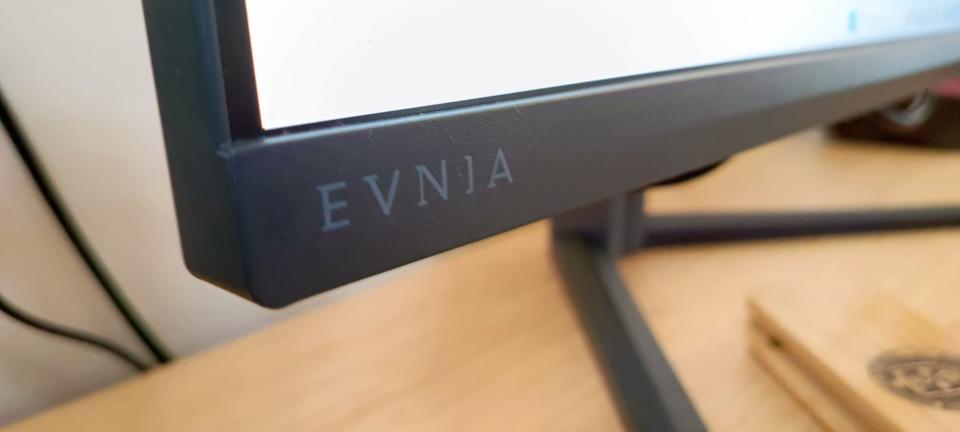
Philips Evnia 25M2N5200P review: Key specs
Philips Evnia 25M2N5200P review: Design and build
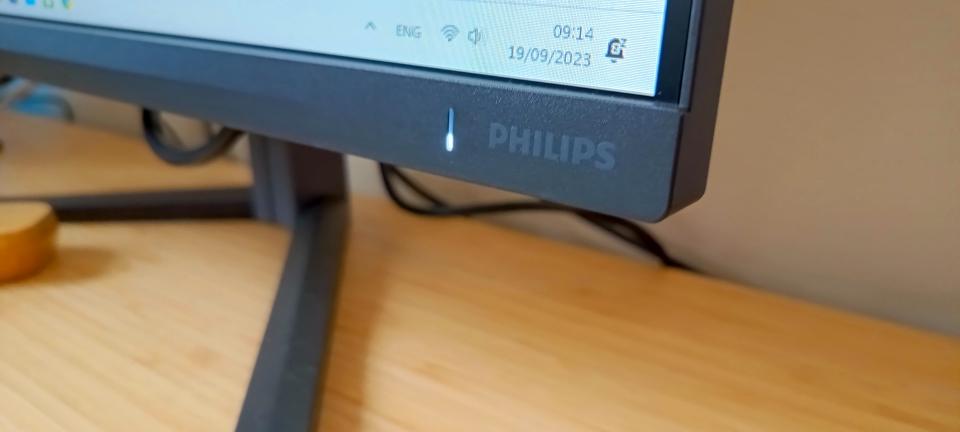
Like other products from the fledgling Evnia brand, the 25M2N5200P eschews the usual flash of gaming-product design for a more reserved design aesthetic. The thin-bezelled frame is a dark grey (titled Dark Slate by Philips), with a textured bottom bezel and the Evnia logo inscribed subtly into the bottom corner. For the environmentally inclined among us, I'm glad to report that the housing is PVC/BFR free and the product is mercury free too, RoHS-compliant and the packaging it arrived in is 100% recyclable.
Like other Philips monitors, this Evnia monitor comes with a VESA mount, and it's exceedingly easy to assemble, i.e. attach the screen to the two-pronged textured stand. The assembled monitor weighs about 4.6kg, which is average for a monitor this size, and the range of adjustments made everything fairly easy to manoeuvre on my desk as I was setting it up.
The recessed notch on the back hosts two HDMI ports and a DP port, along with a mini USB hub featuring a USB-B port and four downstream USB-A ports. Unfortunately, there's no USB-C connectivity here, but the budget spec has to make some concessions, I guess.
While some may bemoan the lack of flash here, others will see this model as an opportunity to combine a gaming monitor with something they can use as a work monitor without advertising the extracurricular use of it. I find it inoffensively nondescript but wouldn't mind a little bit more of a flair, personally.
There's a little protruding hook at the top of the stand, ideal for hanging your headphones on when not in use.
Philips Evnia 25M2N5200P review: Features and performance
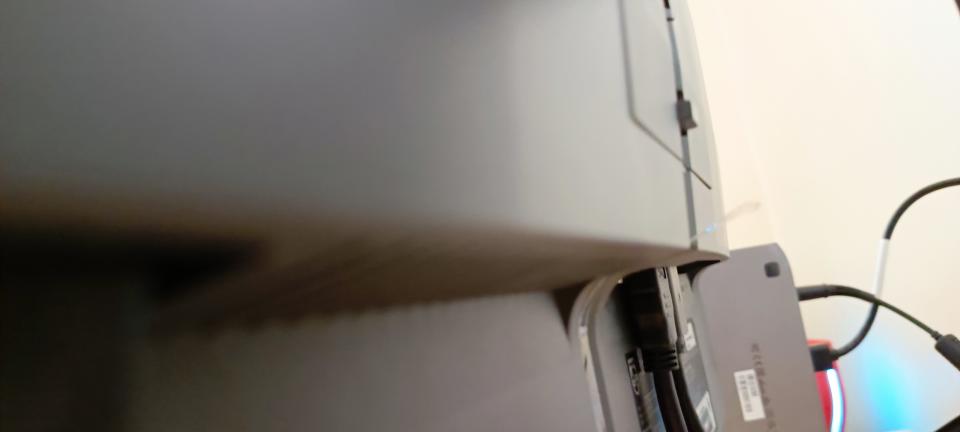
As a 1080p gaming monitor, the big selling point here is the high refresh rate on offer (up to 280Hz with overclocking) and the 0.5ms GTG response time rather than any other premium features. The resolution is pedestrian for a 27-inch monitor, coming in at a hair under 90 PPI, so high-res video-editing or professional graphic design is going to be a no-go here.
However, if all you need is something that's good enough for photo-editing, casual creative tasks or basic video work, the colour gamut here and the respectable 16.7 million colours and 1,000:1 contrast ratio will do just fine. Philips claims a colour coverage of NTSC 93.4% and sRGB 110%, but it doesn't have an AdobeRGB spec, as it's not intended as a pro creative monitor. The aforementioned specs are good enough for casual or simple work, though.
It can connect to two computers simultaneously (or be daisy-chained to a second monitor) for those with multi-device requirements, and it switched automatically between whichever of my devices, my desktop tower or my laptop, depending on which one I was using at that time.
I didn't notice any ghosting when playing, and a run through the Eizo Monitor Test and Monitor Test Utility revealed no dead pixels or distortion, and the response rate of 0.5ms was neatly backed up in testing too. There are several preset profiles available on the monitor, and I only needed to do minimal adjusting to those I liked using for work and gaming, respectively, to get them looking like I preferred.
When I was working with photos, zooming in did show up its limits with noticeable pixellation, and the resolution for gaming led to a slightly-less-than-perfect experience with photorealistic or super-detailed games, but again, the 25M2N5200P isn't trying to be a pro esports screen to begin with.
Philips Evnia 25M2N5200P review: Price
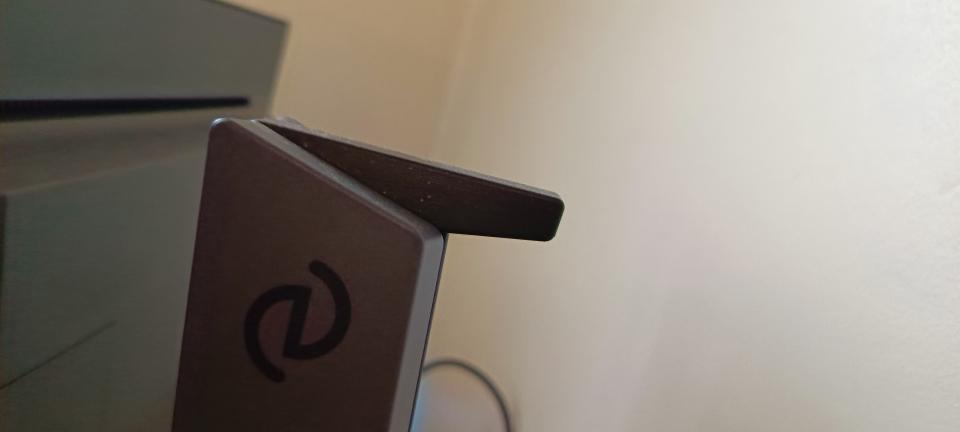
The going rate for the Philips Evnia 25M2N5200P in the UK is £227.99, but if you shop around and wait for deals events, it can usually be had for under £200. At the time of writing, it's not available for US shoppers at the time of writing, but do keep an eye on our deals widget below for any changes to that.
This price point is fair for the specs on offer, and in fact you won't see a huge number of IPS panels at this price (though you will be able to get some VGA panels with a higher 1440p resolution for a similar financial sacrifice).
Should I buy the Philips Evnia 25M2N5200P?

If you don't mind sacrificing a bit of pixel density in order to get an IPS panel for just over £200 (or just under if you're lucky), and unless you prefer the flashier propositions of brands like Alienware or AOC, you could do worse than giving the Philips Evnia 25M2N5200P a look. It does suffer a little in the hyperconnected ultra hi-res world of today from its pedestrian FHD resolution and the lack of any USB-C connectivity, but if what you need is an affordable hybrid-working monitor that can up its refresh rate for smooth gaming, the 25M2N5200P should do a very decent job indeed.

